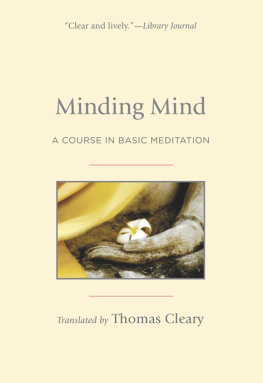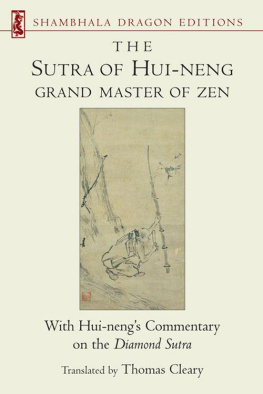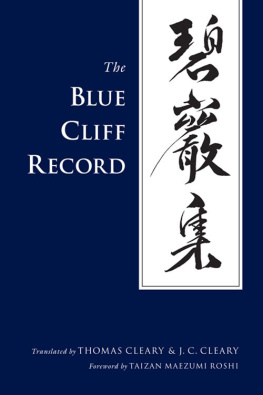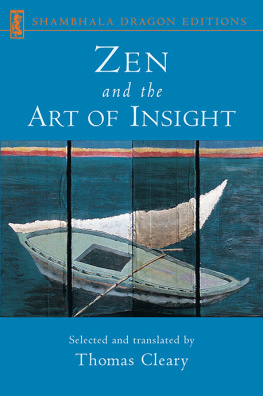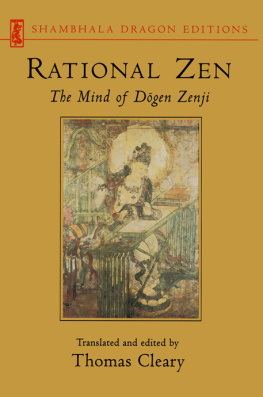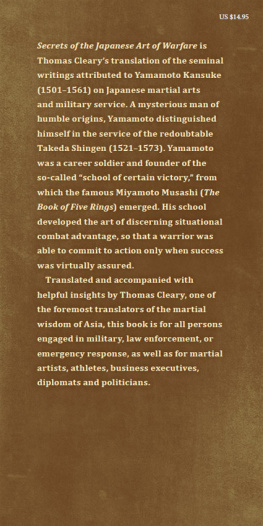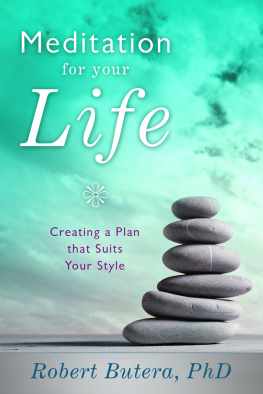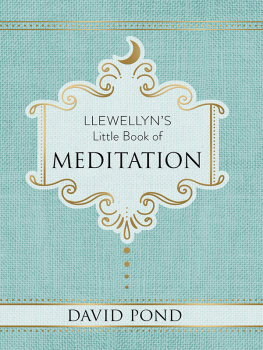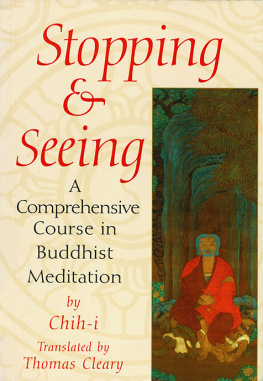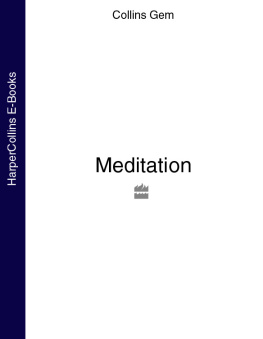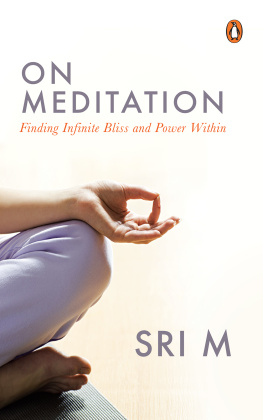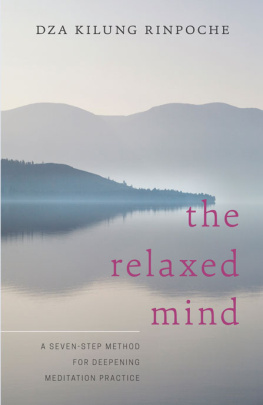Clear and lively.
Library Journal
ABOUT THE BOOK
Some types of meditation are aimed at promoting a sense of confidence and well-being in everyday life, while other types focus on producing altered states of consciousness, transcending the world, or developing skills for serving other people. The instructions in this book focus on the highest type of all, pure, clear meditation: a state of true objectivity that enables the practitioner to use all the other types of meditation freely and consciously, without becoming fixated or obsessed. Minding Mind is based on traditional texts by renowned teachers from various Buddhist schools of China, Japan, and Korea.
THOMAS CLEARY holds a PhD in East Asian Languages and Civilizations from Harvard University and a JD from the University of California, Berkeley, Boalt Hall School of Law. He is the translator of over fifty volumes of Buddhist, Taoist, Confucian, and Islamic texts from Sanskrit, Chinese, Japanese, Pali, and Arabic.
Sign up to learn more about our books and receive special offers from Shambhala Publications.

Or visit us online to sign up at shambhala.com/eshambhala.
MINDING MIND
A Course in Basic Meditation
Translated and Explained by
THOMAS CLEARY

SHAMBHALA
Boston & London
2013
Shambhala Publications, Inc.
Horticultural Hall
300 Massachusetts Avenue
Boston, MA 02115
www.shambhala.com
1995 by Thomas Cleary
All rights reserved. No part of this book may be reproduced in any form or by any means, electronic or mechanical, including photocopying, recording, or by any information storage and retrieval system, without permission in writing from the publisher.
The Library of Congress catalogues the previous edition of this book as follows:
Minding mind: a course in basic meditation/translated and explained by Thomas Cleary.1st ed.
p. cm.
eISBN 978-0-8348-2486-7
ISBN 978-1-57062-004-1
ISBN 978-1-59030-685-7
1. MeditationBuddhism. I. Cleary, Thomas F., 1949
BQ5612.M56 1995 94-27845
294.3443dc20 CIP
Let the wise one watch over the mind,
so hard to perceive, so artful,
alighting where it wishes;
a watchfully protected mind
will bring happiness.
Dhammapada
Sages use the mind deliberately,
based on its essence.
With the support of the spirit,
they finish what they begin.
Thus they sleep without dreams
and wake without troubles.
Huainanzi
Conscious cultivation of consciousness has been practiced by human beings for thousands of years, giving rise to many traditional sciences of mental development whose origins are lost in the dimness of the early dawn twilight of human awareness. Buddhist tradition is based on a breakthrough made by Siddhartha Gautama twenty-five hundred years ago in his attempts to rediscover the essential way to moksha, liberation, and bodhi, enlightenment, lost ideals of ancient tradition.
The mental science of Buddhism is extremely rich and complex. It is not simply an outgrowth, reformulation, or development of ancient Indian religion. According to Buddhist lore, there are five general categories of practice by which the relations and differences among orientations and methods of meditation can be distinguished.
The first type is called the meditation of the ordinary mortal. The intention and purpose of this type of meditation is to enhance the ordinary perceptions and faculties of the individual. The desired result is greater efficacy and efficiency in the ordinary activities of life, leading to a sense of confidence and well-being.
The second type of meditation is quite different from the first, focusing on transcending the world rather than dealing with the world in conventional terms. The desired result is quiescent nirvana, a profound peace of mind characterized by extinction of psychological afflictions. Exceptional psychic capacities are also commonly associated with people who attain quiescent nirvana in this way, but because they habitually remain in the quiescence of individual nirvana they do not ordinarily exercise these capacities in a concerted manner.
The third type of meditation focuses on the cultivation of altered states of consciousness. Those who practice meditation for the sake of attaining nirvana may also use these altered states for the purpose of breaking attachments to conceptual and perceptual conventions, but they are thereby exposed to the danger of addiction to intoxicating trances. Buddhist teaching emphasizes sobriety to avoid being obsessed, or as it is said, reborn under the sway of unusual states, taking care to use them for specific pragmatic purposes rather than for self-indulgence.
The fourth kind of meditation is dedicated to development of extraordinary capacities in the service of other people and the world at large. Practitioners of this type of meditation may use any or all of the methods and techniques characteristic of the first three kinds of meditation, but with a different orientation, in a different manner, and in a broader context. The range and scope of meditational states and experiences in this fourth category, furthermore, exceed those of the lower types of meditation by many orders of magnitude.
The fifth and highest type of meditation, according to this ancient classification, is called pure clear meditation arriving at being-as-is. This is considered the most penetrating insight and the nearest that an individual consciousness can come to true objectivity. The realization of pure clear meditation also enables its master to employ all the other types of meditation method deliberately and freely, without becoming fixated or obsessed.
Minding Mind is a compendium of instruction manuals dealing primarily with ways of attaining to the mode of experience characteristic of the last-named type of meditation, pure clear meditation arriving at being-as-is.
The first manual, Treatise on the Supreme Vehicle, is attributed to Hongren (602675), who is known as the Fifth Patriarch of Chan Buddhism in China. There appears to be no historical trace of this text previous to the sixteenth century, and its origins are obscure. Although Hongren, like his teacher and several of his own disciples, was an illustrious Chan master of his time, little is really known for sure about his teaching or the activities of his school.
The language of this meditation manual would also suggest that it was in fact written in the sixteenth century, although certain passages, especially the quotations, do not reflect typical sixteenth-century Buddhist scholarship or language, and they give the impression that the text as we know it today is based on an older model. It may also be a product of a Korean branch of the ancient school. The method taught in this manual is basic and quintessential in theory and practice, setting the stage for the texts that follow.
The second manual, Models for Sitting Meditation, was composed by Chan Buddhist Master Cijiao of Changlu in late eleventh-century China. Little is known of Cijiao, except that he was not only a master of the powerful Linji school of Chan Buddhism but also a patriarch of popular Pure Land Buddhism. The combination of Chan and Pure Land Buddhism, especially in the domain of concentration technique, is commonly found in the records of early meditation schools of China, Korea, Japan, Tibet, and Vietnam.
The next manual, Guidelines for Sitting Meditation, was written by Foxin Bencai, a younger contemporary of Cijiao. The instructions of Foxin and Cijiao, both quite brief, address problems of deterioration in the quality of meditation practices and prescribe simple remedies to counteract confusion and misalignment in order to foster the proper state of mind.
Next page
